|
"I like to take nothing and make something."
Sangre Grande craftsman Reynold Wells, 76, has made a living with this ideology for 30 years, picking up discarded pieces of wood, PVC and stones and creating something of value. Now retired, Wells is keen to pass on his knowledge to young people. Adjoining his home, Wells has a museum, a small room filled with decades of his work. He is hoping the authorities see the potential in the industry and invest in it. He said, "If yuh think yuh need to have money to start a business, yuh wrong. I like to take nothing and make something. All you need is the right energy. "I want Toco/Sangre Grande to wake up, because we rich, yuh know. We have all kinda seeds, gravel. We ain't want no employment. We just hadda think." On display at the museum are African masks made from coconut shells, African-style sculptures made from wood, wooden elephants, leather purses, mirrors, necklaces, earrings and chac chacs. He said one of the merits of getting in the craft industry is becoming independent. "To be independent is a nice thing. If you working with me, you not independent – yuh dependent. "But if you working for yourself, sometimes yuh lie down on yuh bed 7 o'clock and yuh now start getting yuh motivation for the day. Through the independence, a lot of things will be revealed unto you." He believes the potential is limitless when one masters the skill of a craftsman. "This could go universal. Art could make any country famous." Wells had the distinction of six of his pieces being featured at First Citizens' Sangre Grande branch a few years ago, as part of an Emancipation Day exhibition organised by the Walke Street Emancipation Committee, headed by Montsho Masimba. He said some of his work was also featured in an auction alongside other artistes when former US president Barack Obama visited the country in 2009 for the Summit of the Americas. Wells said he has worked with the Ministry of Community Development's Youth Training and Employment Partnership Programme (YTEPP) programme, as well as prisoners. "YTEPP deal with a lot of school dropouts. Golden Grove, some of the prisoners take it good, because I see some have they business on Frederick Street, doing dey lil hustle with dey craft." Wells said some of his craft pieces took over a year to make, particularly a 3D three-foot piece depicting a mother and her suckling child. He said he usually works on multiple items at the same time. "Sometimes it will call yuh and dismiss yuh." If you try to force the crafting when your mind is not fully invested, "Yuh will end up with stitches. Yuh go bleed." Wells recalled being commissioned once by a man in Chaguanas to make an intricate piece of wooden art. He said the man saw the incomplete version and was blown away. "He say hold that – $1,500. Ah say, 'Nah, when ah done.'" But a week later, Wells saw a clip on the news that the man had been murdered. Asked how young people could be swayed from a life of crime, Wells said parents must empower their children to be independent thinkers. He said craftsmanship is about thinking. "They never teach we to think. It have some people who can't think. It have people who don't know that they don't know. I might be teaching you something that you don't know that you don't know. I have to have patience with you to make yuh know. The average people out there right now, like they can't think. "The easiest thing to do is something wrong. Youths were never encouraged by their parents to say no. I couldn't tell my parents no. If my mother say, 'Sit down,' I have to sit down... "I grow my children different. Young people need to be empowered, think from small, get away the negative thought and think. "When he go out there and he pardna say: 'Hear nah, if yuh see that easy wuk we do last night, lewwe go, nah,' – he parents never teach he to say no. He can't say no. "So he easy to mislead. He could become a follower." Wells said he is eternally grateful to his father, who had always pushed him to think for himself. He said comments by former president and prime minister ANR Robinson also motivated him to "have something." He said he also learned a lot from a Santa Cruz craftsman called Anthony, as well as Selwyn Richards from Beetham Gardens in Port of Spain. Wells said much of his inspiration came from dreams, nature and other muses. "The imagination eh have no boundary eh. Just the system has boundaries." He recalled taking small pieces of wood and shaping them into elephants. In Hinduism, the elephant is a sacred animal and seen as an incarnation of Lord Ganesh. Wells said the pieces were small enough to hang on the rear-view mirrors of cars. "I go Chaguanas, I sell a dozen in ah day for $30. Look at the small piece of wood. Yuh could make a 100 in this and sell that in ah month. Yuh eh need cash to open a business. I've been living off my hands." Wells said it is important to live well with everyone as one can never know when help is needed. Since his wife died on October 1, 2006, he has been able to get a plate of food from any of his neighbours. "My lil neighbourhood, I never cuss my neighbour and them. I not living bad with my neighbour and them." He said he is ready to pass on the knowledge to students and other groups, but structural help is needed. He appealed to the Ministry of Education and the Sangre Grande authorities to collaborate with him to keep craftsmanship alive. Wells can be reached at 868-292-9768. (Source: Newsday, Oct 22, 2022)
1 Comment
Dr Rita Pemberton Her Majesty’s Order in Council of November 17, 1888, which abolished the government of Tobago at the end of 1888, cleared the way for the union of Trinidad and Tobago, which took effect from January 1, 1889.
The explanation for the state of affairs which prompted this change resided with the decline of the island’s economy, which caused its penurious state. This situation was not unique to the late nineteenth century, for since the beginning of the century it had been evident that the island was on a path of economic decline. The tug of war between Britain and France for ownership Tobago played out at its worst during the period of the American wars of independence. That provided France with the opportunity to attack its arch-rival when it was faced with a major distraction. France became an ally of the revolting American colonies and launched an attack on Tobago, grabbing it from the British, and instituted a 12-year administration. French rule was ushered in by a series of negative developments: destruction of estates and disruption of plantations' operations; new and onerous taxes; a ban on trade with Britain and new trading arrangements with France; confusion over mortgage payments to British investors; and uncertainty about property ownership. Seven years after the island reverted to British ownership, it again fell into French hands, at the start of the 19th century, only to be reclaimed by the British by 1802. From that time onwards, Tobago was unable to attain any importance as a sugar producer. The uncertainties of the past led to properties being advertised for sale on the London market, and operating planters encountered difficulty in obtaining credit from investors in Britain. The situation worsened as the century wore on, with the termination of the trade in captive and enslaved Africans and the advent of Emancipation, which caused the price of labour and production costs to increase. The Tobago sugar industry floundered in the face of increased competition on the international market; low prices for the poor-quality sugar the island produced; negative British policies; and an administration which remained wedded to sugar production at the exclusion even of consideration of alternative economic pursuits. Despite various measures to reduce its operation costs, the Tobago House of Assembly failed in its bid to address the island’s financial woes, and at the behest of the imperial government, reduced the cost of administration by removing the office of governor and replacing with a more lowly paid official, the commissioner, as the most senior on the island. The first appointee was Commissioner Lorraine Geddes Hay, who had previously served as Tobago’s treasurer from 1879-1885. Hay was fully aware of the parlous state of the island’s finances, but the situation worsened during his administration. Revenue had been falling incessantly since 1880. Only three out of the original 32 distilleries remained in operation and the challenges faced by large landowners caused a decline of plantations which left owners unable to pay their taxes. The decline in trade caused a reduction of customs duties on import and exports and excise duties. During the Hay administration, revenue continued to decline, because every source of revenue had been reduced. Hay negotiated and obtained a loan to repair the Tobago jetty, which was repaid by October 1890, and other loans were approved for the repair of public buildings. While Hay was in favour of the establishment of a land-based peasantry, he had developed neither policy nor programme which w ould allow the larger section of the population to contribute meaningfully to the overall development of the island. By 1892, the island’s indebtedness had escalated to £7,000 and its financial straits caused Governor Napier Broome to visit. He found it in a very bad state, with worsening economic decline. Tobago was heavily in debt and the salaries of public officers had not been paid for some time. In addition Hay was virtually useless as an administrator because of his alcohol consumption. Broome reported that the island was bankrupt and capable neither of meeting its commitments nor paying its debts. Broome took over the administration and made firm decisions about the island’s finances. He paid for essential services and those services provided under legal contracts, while public offices were put on half their salaries and all other payments were suspended. Broome declared the existing operating system in the unified colony unworkable and suggested Tobago should be completely integrated with Trinidad and governed as a ward, or a cost-cutting exercise should abolish some posts and combine some offices. Supporting the governor’s findings, the Colonial Office blamed Hay for the island’s degeneratione. It was argued that that its problems could have been resolved with effective leadership, but because Hay was incapacitated, he had ceased to function effectively. Hay was forced to resign and an acting commissioner, in the person of David Barnes Horsford, the acting auditor general of Trinidad, was appointed. Horsford investigated the island's accounts and reported what was already apparent: revenue was decreasing and expenditure increasing. The island’s debt stood at over £8,000, with no internal means of resolution. But the Colonial Office was adamant: the administration must find a solution, for neither loans nor aid of any type would be forthcoming from the imperial government. Governance was clearly an important factor in the fiscal crisis Tobago faced, Not enough consideration was given to the calibre of those appointed to the highest offices, because the major consideration was to cut costs rather than to select capable individuals. (Source: September 29, 2022) CANADIAN energy company Touchstone Exploration has announced that the Coho facility has safely delivered first natural gas, representing the first onshore natural gas project to come on stream in Trinidad and Tobago in over 20 years.
The Coho area is located in the Ortoire block, where Touchstone has an 80-per cent operating working interest, and Heritage Petroleum Company holds the remaining 20 per cent. In a media release yesterday, the company said on September 26 the Coho facility was approved by the Certified Verification Agent with the Energy Ministry promptly authorising facility commissioning. “On September 27, 2022, we commenced commissioning and achieved commercial deliveries on October 10, 2022, with a field estimated sustained gross production rate of approximately 10.5 million cubic feet per day (approximately 8.4 million cubic feet per day net). We will continue to monitor the Coho-1 well in an effort to optimise production,” the energy company said. Touchstone said in conjunction with initial production, the company has sold the 2.7-kilometre, six-inch gathering line tying in its Coho facility to the Baraka natural gas facility to the National Gas Company of Trinidad and Tobago Ltd (NGC). It noted natural gas production from the Coho facility will be sold to NGC pursuant to a natural gas sales agreement executed in December 2020. Paul Baay, president and chief executive officer, said Coho production represents the first stage of diversifying our product mix in Trinidad. “The Coho facility is capable of 24 million cubic feet of gross natural gas per day, giving us the ability to potentially add incremental production volumes through a combination of additional drilling and well optimisation. I would also like to recognise the collective contributions of our team in making this project a success,” Baay remarked. (source: Daily Express, Oct 12, 2022) A dazzling performance on stage at the Divali Nagar on Saturday. PHOTO BY AYANNA KINSALE - AFTER an absence of two years, due to the pandemic, the Divali Nagar returned at the nagar ground in Chaguanas, with a gala opening on Saturday evening.
Although opening night saw significantly less crowds than in years gone by, those who did show up, were treated to traditional East Indian music, songs, dance and food. East Indian clothing, shoes and jewellery were also on offer for sale at the many booths. Local VIPs including former prime minister Basdeo Panday, Tourism Minister Randall Mitchell, Agriculture Minister Kazim Hosein, and Chaguanas mayor Faaiq Mohammed were present. President of the National Council of Indian Culture (NCIC) Dr Deokinanan Sharma greeted the small crowd at the main stage and in revelling in the return of the celebrations, said that management of the organisation will see changes in the near future. The NCIC manages the nagar annually. Mitchell also spoke at the opening and thanked Sharma and his team for the work they have done over the years to ensure the continued survival of the nagar. "Their work has undoubtedly made citizens more aware of traditions associated with Hinduism and East Indian culture; a culture which has significantly influenced our life here in TT," Mitchell said. He also reminded of the important message behind the celebration of Divali, for both Hindu and non-Hindus, which is the triumph of good over evil. He urged everyone to enjoy the nine nights of celebration at the nagar leading up to the observance of Divali on October 24. “More importantly, let us challenge ourselves to be more peaceful, polite and gracious to one another. Let us continue to walk along the path of positivity, hope and light.” In between these speeches, there were performances from various cultural groups including the ZeeTV Shiv Shakti dance group led by Michael Salickram; the Dragon Boys' tassa group and even a steelpan rendition of a bhajan (Hindu religious song). (source: Newsday, Oct 16, 2022) aron Duncan has literally made his dream come true.
The 19-year-old artiste, who dreamt in March that he collaborated with the Mighty Sparrow, has seen that dream come alive. On Tuesday, Duncan released Legacy, his collaboration with the Calypso King of the World. The song was recorded in August and in September; Duncan flew to New York to shoot the video with the calypso legend fondly known as Birdie. “I feel a sigh of relief because since I dreamt that dream, for about six/seven months I had anxiety every day,” Duncan told Loop News. Recalling the journey to realising his dream, Duncan said in March he had the dream that he was to do a song with Sparrow. He said he woke up and immediately started working on the song. “I told my parents and everyone was doubting that I could make this happen because he not here, he has have mobility issues, people weren’t sure if he could walk or sing still but I said nah I want to make this happen. I reached out to him and asked if he would be open to doing a collaboration with me and he said anything for you Aaron. We have that chemistry from long time,” he recalled. The video opens with a younger Duncan performing Education with Sparrow. That is his favourite song from the bard, he told Loop. The timing was right for Duncan who had reached out to Sparrow many times to do a collab but couldn’t because at the time he wasn’t writing or producing his own music. Due to his love for music and a need to take the financial stress off his and his parents’ pockets, Duncan started writing and producing his own music for two years. That gave him the confidence to work on the song for Sparrow. “I said I have the facilities to write and produce the music and get it done and I said I would get it written and done to you in two days. My whole family was vex with me because I promise that and I didn’t know how it was going to happen, but I did it and from the moment he heard it he said let’s get it on,” he said. He said the day they recorded the song was the day they heard Blaxx had died which really impressed upon him the importance of celebrating our legends while they are still alive. Duncan said the project was a historic one in that it was Sparrow’s first full collaboration with another artiste. The calypso king had previously done a feature on Machel Montano’s remake of Congo Man. He said once the song was recorded, the other challenge was the making of the video. “The dream wasn’t done yet. We had to get a music video and there was more doubt that I could do it because he is living in New York. So we went to New York in September to film the video with Sparrow and that was one of the greatest experiences in my 19 years of life,” he said. Asked how he feels during the journey to realizing his dream, Duncan said he was nervous. “I was nervous because everything still feels like I am dreaming,” he said. “I guess it was doubt inside myself, I didn’t think it would reach so far to get a recording with him and see him after so long and to do a video on a song that I wrote and produced. And he did it willingly.” As a youth who believes in calypso music and wants to see the genre endure, Duncan said the collaboration shows that we could easily revive it, especially for the younger generation. “Calypso is still alive; we just have to know how to modify it. This song is a combination of calypso and soca. We could easily bring this back and I am basically showing the world that we as young people should never forget where we came from. Sparrow is the calypso king of the world and a lot of young people are in awe of him.” Legacy is Duncan’s third release for the 2023 season. (Source, the Loop, Oct 13,2022) The University of Toronto is holding a special webinar, A Rose Among Thorns: Calypso Rose’s Life, Music and Impact, as part of Calypso History Month celebrations, on October 22.
It’s scheduled to last three hours, with three singers each doing two classic Rose songs, and four short academic talks. The event has been organised by actor, playwright and comedian Rhoma Spencer, who has been a stalwart in the Toronto Caribbean community for many years (though she returns to Trinidad to launch her first comedy album and headline an event to showcase at Kafe Blue, Port of Spain on October 19). Spencer was recently made an artist in residence at the Queer and Trans Research Lab at the university, and plans to create a musical on the life of Calypso Rose, to be given a staged reading next June. Last October she also organised a Calypso History Month online conference and when she approached the university about doing one to start her artist-in-residency term, it was very supportive. The programme will begin with three experienced female calypsonians performing Rose classics. Two are based in Canada – Macomere Fifi, who is the six-time Canadian calypso monarch, and Susan Grogan, a singer from Barbados who is the leader of Neu Jenarashun, a soca band in Toronto. The third is Stacey Sobers,the TT Calypso Queen in 2018, who will be the young Rose in Spencer’s forthcoming musical next June. She also is the lead in the concert at the Central Bank Auditorium, We Love Kaiso Since We Small on October 29. This is the fifth in the series of annual kaiso concerts that she calls Crackers and Cheese. She was featured at the 2022 Taste of Carnival performing GB’s Legacy Lives, a tribute to Singing Sandra that Sobers commissioned GB to write. Presenters of academic papers will include Dr Hope Munro who will look at the changing musical textures in Rose’s music. Munro’s book What She Go Do: Women in Afro-Trinidadian Music (2016) is a detailed study of women in calypso. Andil Gosine, a York University professor and artist/curator, will discuss the new role that Rose has taken on in France over the last decade, with many live shows and working with her record label there, Because Music, with a new album scheduled to come out soon. Gosine has been in Trinidad for the launch of his new book, Nature’s Wild, at Medulla Gallery, and the first display of artist collaborations that grew out of it. Gosine also recently curated an exhibition at the Ford Foundation gallery in New York City which the New York Times praised as a “a lush introduction to an international and multigenerational group of female artists of Asian-Caribbean origin.” Dr Alison McLetchie, who teaches at South Carolina State, and has been writing about calypso for years, says her talk will focus on “the complexity that is the life of Caribbean women and a female performer”. The moderator for the event is writer Dr Ramabai Espinet. Spencer had hoped to have Rose herself participate, but she is recovering from a recent knee operation. This event is a way to celebrate her long career and hope for her speedy recovery. The webinar takes place on Zoom on October 22 from 2pm EDT/ TT time. Registration is free and further details and the link to register are at: https://sds.utoronto.ca/events/a-rose-among-thorns-calypso-rose-life-music-and-impact/ ing musical textures in Rose’s music. Munro’s book What She Go Do: Women in Afro-Trinidadian Music (2016) is a detailed study of women in calypso. (Source:Newsday, Oct 15, 2022) HENRY Pereira will forever be lauded for bringing a local identity to parang music.
So exclaimed National Parang Association of Trinidad and Tobago (NPATT) public relations officer Joanne Briggs following the recent passing of the parang stalwart. “What Henry did is bring a sense of ‘Trinidadianess’ to the music. Even though he kept the tradition of the parang music structure, he incorporated some of what we are in the music,” said Briggs, during a WhatsApp exchange with the Express yesterday. That vision changed the course of the genre and gave parang the unique sound that is loved throughout the islands today, Briggs said. Pereira’s iconic parang hits “Parranda Fina”, “En El Corazon del Hombre”, “Andamos Buscando”, “Soca Sereno” and “Canta Noel” are all standards of the genre. “For example, with ‘Parranda Fina’—which is a favourite of a lot of parangderos, and they perform it as part of their repertoire—that song has a calypso rhythm to it. And it also describes where we go to sing parang and what we do for parang. It’s basically a tribute or love song for what parang is for us as parangderos,” Brings added. Pereira, 76, passed away on September 25. The Los Reyes parang band lead singer had suffered “a long illness” and was buried on September 29, following a service at St Anthony’s RC Church, Tabaquite. NPATT president Alicia Jaggasar expressed condolences to both the Pereira family and Los Reyes yesterday. Jaggasar, lead singer of Los Alumnos de San Juan, said Pereira’s contribution will live on for decades to come. “Mr Pereira will be missed. Many parang bands play his music, and his contribution to the artform would live in the hearts of all parranderos and parang lovers forever,” Jaggasar said. Briggs, meanwhile, said while parang music has lost another formidable act, they are still privileged to call on the experience and wisdom of veterans like Clarita Rivas, Michael Lezama and the surviving members of the famous Santa Cruz-based Lara Brothers band. “We still have people like Clarita Rivas around. We still have some members of the Lara Brothers still there—for example, Pink Eye. Even though he hasn’t been in the frontline as the Lara Brothers were, he is still part of the foundation of parang here. Yuh have people around. Our foundation members like Michael Lezama from San Jose are still here to learn from,” Briggs said. The Spanish teacher from Tabaquite In life, sharing knowledge is what Pereira did best. He was fondly known as the Spanish teacher from Tabaquite, having taught at the only secondary school in the area, Tabaquite Composite, after starting his teaching career at Rio Claro Government Secondary School. Pereira’s big break in music came unexpectedly after joining his first band, Los Muchachos del Agua, in 1973. The guitarist for the band, a young Pereira, found himself thrust into the spotlight and asked to do a solo one night when the original lead singer failed to show. “That performance won him the prize for best lead singer. He went on to win this title numerous times,” Briggs recalled. Jaggasar, meanwhile, says the passing of legends like Pereira leaves immense spaces in parang that must be filled by those next in line. It’s up to the more experienced parranderos on the island to set the pace anew for the next generation, she said. “Henry Pereira has influenced the lives of all parranderos in Trinidad and Tobago. During his earthly presence [he] ensured that his legacy would live on through the knowledge and skills imparted to us parranderos. On a personal note, Mr Pereira has been instrumental in me being the writer and parrandera I am today. I am writing and my eyes and heart are filled,” Jaggasar concluded. {source: The Daily Express, Oct 5, 2022} Trinidad is shrinking. On every coast, the ocean is clawing at the land.
A dramatic example of this unstoppable force was the collapse three years ago of an entire cliff face in Cedros that consumed almost five acres of land on a peninsula that the experts say is losing as much as two metres of land every year. But long before that Cedros calamity, coastal residents have been watching the sea with unease. Coastline erosion is something that often happens imperceptibly slow, over hundreds, thousands of years. But people are seeing landforms reshaped in mere decades. On Trinidad’s rocky north coast, village elders can tell of the stacks and arches, islets and caverns erased in short years, of sand beaches swept away to reveal long-buried rock formations, and of seafront homes undermined and lost to a conspiracy of wind, waves, currents, tides and a rising sea level linked to global warming, melting the ice caps and glaciers. On the island’s east coast, the roads to the old cocoa plantations and beaches in North Manzanilla now end abruptly at precipices, and the sea takes chunks of fertile land with every high tide. The bathing beaches between Manzanilla and Guayaguayare are losing the coconut trees and seawalls. Tidal surges have made brackish swampland out of cropland. Beachfront home owners spend a fortune protecting their investment, defending with boulders, tyre revetments, tree trunk groynes, rock cages and concrete embankments. But the Atlantic always wins, in the end. In the natural harbour that is the Gulf of Paria on the west coast, the land reclaimed along the King’s Wharf, San Fernando, at Waterloo’s cremation site and the Temple in the Sea, and overtopping the Mosquito Creek road is now being raised to fight the forces of nature. But nowhere is the evidence of Trinidad’s losing battle more striking than on the south coast, with its retreating clay and sandstone cliffs. Here is it recorded that up to 12 metres of land have eroded in a single year in areas between Los Iros and Quinam Bay—the location of South Trinidad’s most visited beach. A similar rate of erosion has taken place along Moruga’s south coastline, where at the once-popular La Retraite Beach, a visitor must descend a cliff to get to the shore. Moruga is also where you will find more worrisome evidence of what is happening—concrete abutments of flood gates and fishing boat landings now sitting out at sea, the staircases of houses embedded in the sand littered with uprooted forest trees and bamboo groves. A glorious triumph At Gran Chemin, Moruga’s main village, the St Peter’s statue, erected by custodian of the area’s history Eric Lewis, is now threatened. Its foundation is being licked by the waves finishing off the nearby fisherman shacks and derelict port facility. But it is this very coastline destruction in Moruga that has revealed a piece of Trinidad’s history buried for so long that when the waves exposed it some years ago, few knew what it was. It was brought to our attention by Moruga building contractor and community activist Loretto Miguel, who himself wanted to know what the thing was. At the dead low tide, you will find a thick cable emerging from the muddy sea, snaking along the sand, and disappearing into the land near the Moruga Roman Catholic Church. It is a telegraph submarine cable. It has been there since 1871, and it surely changed the course of Trinidad’s history. Before its arrival, Trinidad’s only means of communication with the world was by mail. The telephone was not yet invented. A letter to Europe went by ship and a reply would take months. That is, until the invention of the electric telegraph in the 1850s, when Morse code could be transmitted through copper wires over long distances in order to communicate by telegram. This would lead, after many failures, to the development and laying of a transatlantic submarine cable in 1858 connecting the United Kingdom with North America, considered one of the great feats of the time. “It is a triumph more glorious, because far more useful to mankind, than was ever won by a conqueror on the field of battle,” US President James Buchanan messaged Queen Victoria in the first telegram to be exchanged in 1858. The telegraph cable network would expand to include a connection to Cuba, Panama, Jamaica, Puerto Rico, St Thomas, St Kitts, Antigua, Guadeloupe, Dominica, Martinique, St Lucia, St Vincent, Barbados, Grenada, Trinidad and Demerara (now part of Guyana), with the land lines across the islands measuring 275 miles. It is that Trinidad-to-South America cable connection that has been exposed in Moruga. Birth of Cable & Wireless In the journal of chief engineer and electrician Sir Charles Tilston Bright, the man who oversaw the laying of the cable system for the West India and Panama Telegraph Company, his visit to Moruga to examine the proposed landing site is reported as September 9, 1871. Within months of his visit, the island was connected, with it being recorded: “At Trinidad, the Demerara cable was landed at the south-east corner of the island; while the continuing section northwards to Grenada was taken from Macqueripe Bay. The connection to Port of Spain (the capital) on the west side, was made by means of a long land-line. A great part of this was erected through dense forest of more than 50 miles, which had to be cleared by a small army of wood cutters for a width of at least 40 feet, for a considerable distance.” By 1910, the major countries of the world were connected, and messages that took months to send could be transmitted in mere minutes. What can be seen in Moruga is part of the thicker section specially designed to withstand the surf at landing sites—a cable with a core of seven copper conductor wires insulated with a type of natural latex called Gutta Percha, bound by an outer layer of steel, and encased in silica and tar, weighing 16 tonnes to a mile. In all 4,200 miles of cable were laid by the West India and Panama Telegraph Company. And get this: that company would come to be known as Cable & Wireless. {Daily Express, Oct 12, 2022} August 20th marked 206 years since the largest group of Merikins arrived in Trinidad on August 20th 1816.
From 1815 to the 1820s, Trinidad became home to over seven hundred formerly enslaved Black people from the American South who had served in the British Colonial Marines during the War of 1812 in the US. In exchange for their service, they were freed from slavery in the US and given land on which to settle in Trinidad. Known as the Merikins—an abbreviated version of the word, “Americans”—they settled mainly in six Company Villages in isolated forested areas in South Trinidad during a time when slavery was still being practiced. The cultural heritage of the Merikins is kept alive today by descendents of the Merikins both in and out of the Company Villages. Organizations like the Merikin Commission, Merikin Inc. and the Merikin Heritage Foundation, which were formed by members from the community, work to educate the public on the rich history of these freedom fighters. Our exhibition, “Celebrating the Merikins” provides some history on the Merikins and their cultural heritage. Follow this link to view or download the exhibition: https://natt.gov.tt/.../pdfs/Celebrating-the-Merikins.pdf At the National Archives, we have a Merikin Collection, which includes colonial correspondence and records pertaining to the arrival of the Merikins in Trinidad. |
T&T news blogThe intent of this blog is to bring some news from home and other fun items. If you enjoy what you read, please leave us a comment.. Archives
July 2025
Categories
All
|







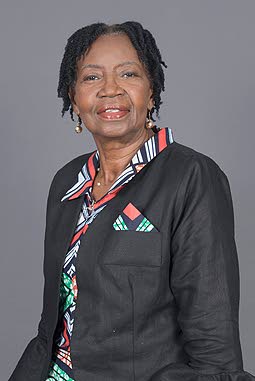




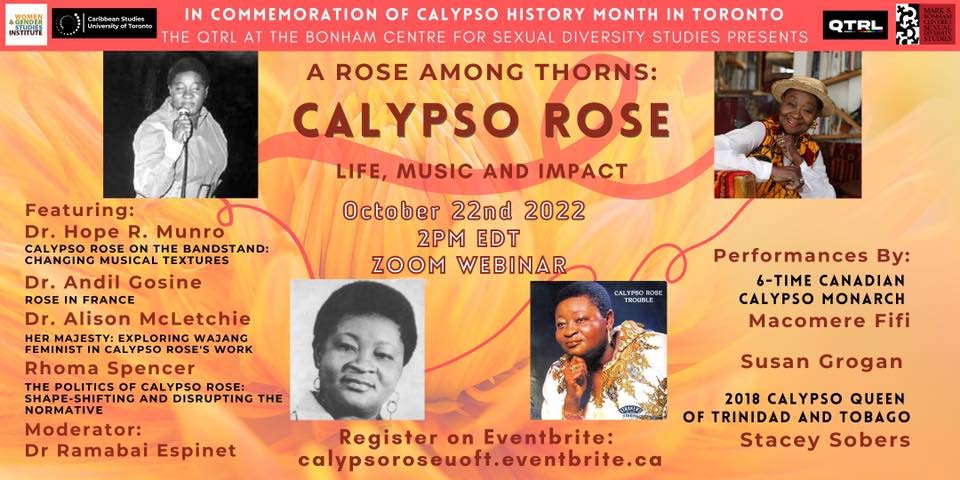
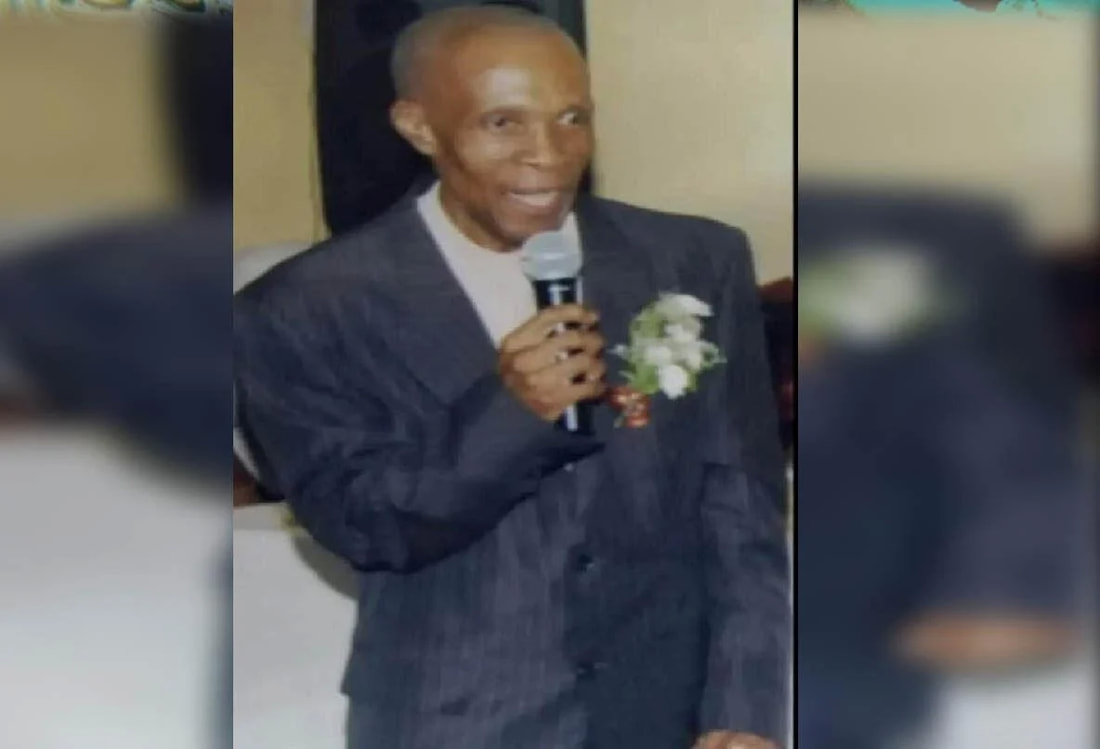
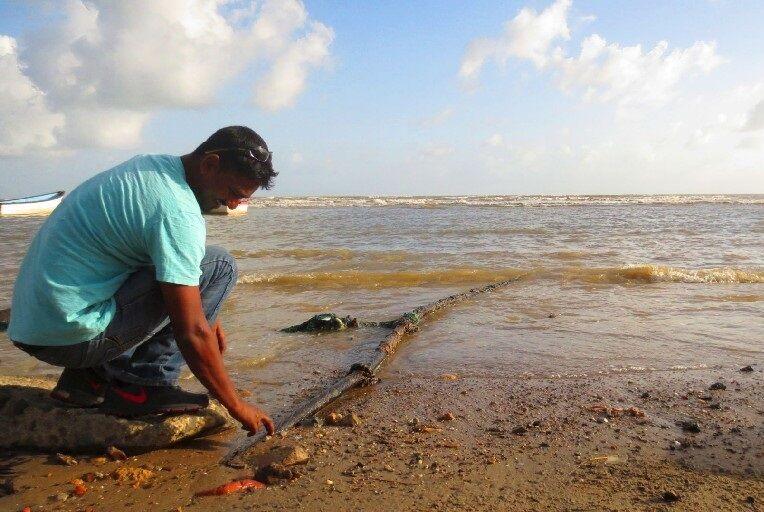
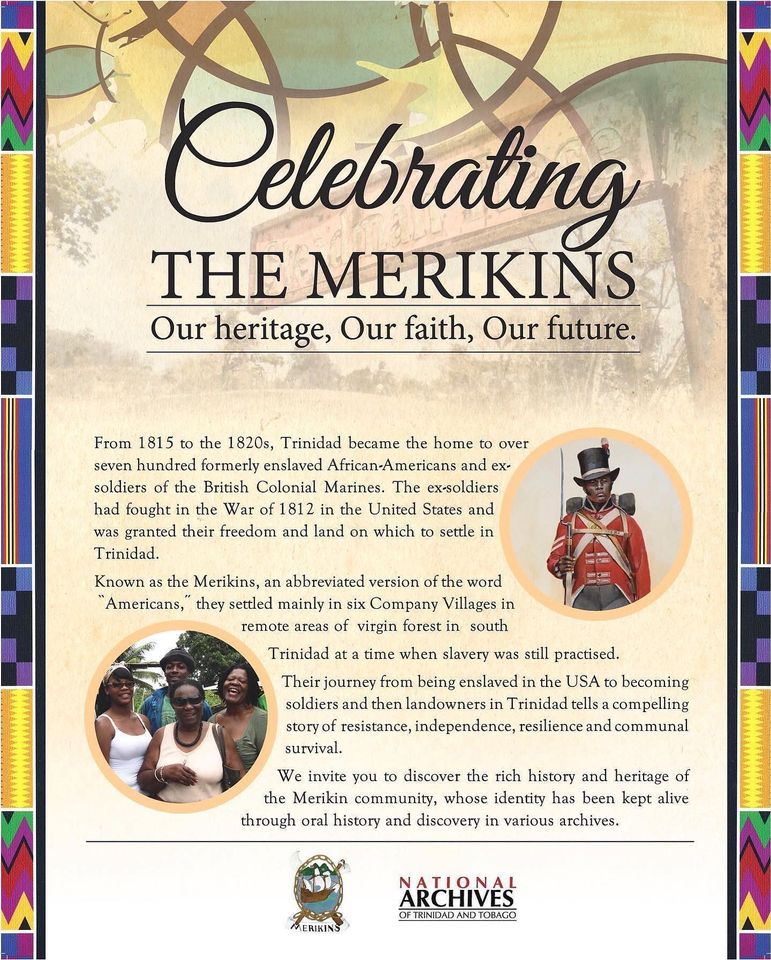

 RSS Feed
RSS Feed